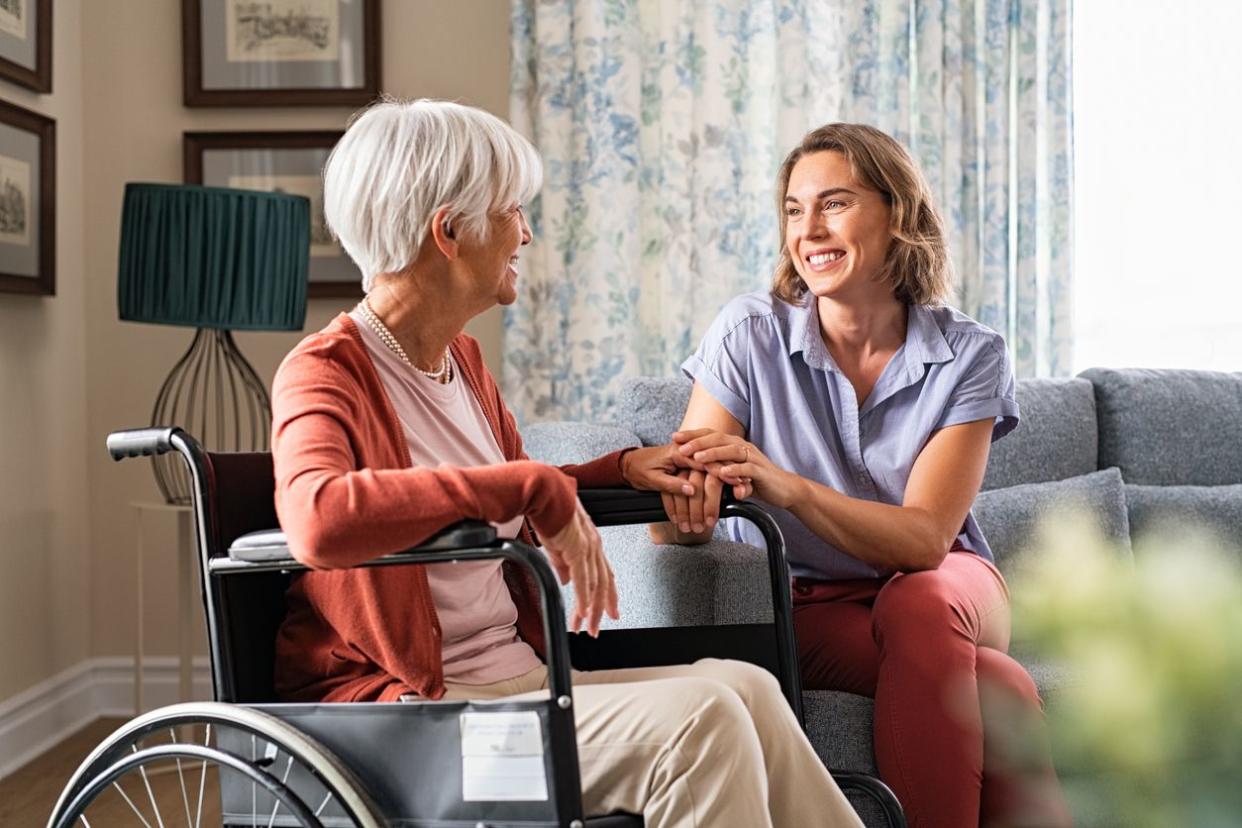The Bathing Conversation No One Wants to Have (But Everyone Needs)
Initiate the essential yet uncomfortable conversation about your parent’s bathing safety. A few moments of honesty can preserve their independence and well-being.
There’s probably no conversation you want to have less with your parent than discussing their bathing safety.
The thought alone makes most of us cringe. It feels invasive, embarrassing, and like a role reversal that nobody signed up for. But here’s what might surprise you: avoiding this conversation isn’t protecting anyone’s dignity—it’s actually putting your loved one at serious risk.
What if I told you this conversation could be the key to preserving their independence for years to come? The truth is, a few minutes of discomfort now could prevent a life-changing accident that steals away the very independence you’re both trying to protect.

Why This Conversation Can’t Wait
Every 11 minutes, an older adult is treated in an emergency room for a fall-related injury.
Nearly 80% of these falls happen in the bathroom, where wet surfaces and tight spaces create the perfect storm for accidents. But here’s what’s truly heartbreaking: most of these incidents are completely preventable with simple modifications and honest communication.
Consider what happens after a bathroom fall. Your parent might lose confidence in their ability to live independently. They may develop a fear of bathing that leads to hygiene issues and social isolation. In worst-case scenarios, a single fall can trigger a cascade of health problems that changes everything.
The conversation you’re avoiding today could be the difference between your parent aging safely at home and needing to move to assisted living much sooner than necessary.

Understanding Why They’re Resisting
Before you approach this topic, it helps to understand what’s really happening in your parent’s mind.
Bathing is one of our most private, personal activities. For many older adults, needing help or modifications in this area feels like the ultimate loss of dignity and independence.
Your parent might be experiencing physical changes they’re not ready to acknowledge. Getting in and out of the tub may have become challenging, but admitting this feels like admitting defeat.
There’s also a generational factor at play. Many older adults grew up believing that asking for help was a sign of weakness or burden. They may prefer to struggle in silence rather than worry their children.
Understanding these emotions helps you approach the conversation with empathy rather than frustration when they seem resistant to obvious safety improvements.

The Right Time and Setting
Timing this conversation correctly can make all the difference in how it’s received.
Don’t wait for a crisis moment or bring it up immediately after you’ve noticed a concerning sign. Instead, choose a calm moment when you both have privacy and no time pressure.
Consider having this conversation during a car ride or walk when you’re side by side rather than face to face. This can feel less confrontational and more collaborative.
Start by asking permission to discuss the topic. Say something like: “Mom, I’ve been thinking about how to help you stay safe and independent at home. Would you be open to talking about bathroom safety with me?”

The Step-by-Step Conversation Guide
Here’s exactly how to navigate this sensitive discussion with love and respect.
Start with your motivation: “Dad, your independence and safety are incredibly important to me. I want to make sure you feel confident and secure in every part of your home, especially the bathroom.”
Listen first: Ask open-ended questions like “How do you feel about your bathroom routine these days?” or “Have you noticed any changes or challenges?” Give them space to share their concerns without jumping in with solutions.
Share observations gently: Instead of saying “You smell like you haven’t bathed,” try “I’ve noticed you seem less comfortable with your shower routine lately. Is everything okay?”
Present solutions as choices: “There are some really attractive safety options available now that don’t look institutional at all. Would you like to explore some together?”
Address equipment stigma head-on: “These aren’t ‘old people’ products—they’re smart safety features that help everyone feel more confident. Even hotels use grab bars because they work.”
Remember, this conversation may need to happen in stages. Don’t try to solve everything in one talk.

Solutions That Preserve Dignity
The key to success is presenting modifications that enhance rather than diminish your parent’s bathroom experience.
Start with simple, attractive safety measures. Modern grab bars come in decorative styles that look like towel bars. Non-slip mats now come in colors and patterns that complement bathroom décor rather than screaming “medical equipment.”
Consider comfort improvements alongside safety. A hand-held shower head provides safety benefits while also making the bathing experience more luxurious and controllable. Understanding the best locations for grab bars in showers shows that safety and style can work together beautifully.
Think about lighting and visibility. Motion-activated nightlights ensure safe bathroom navigation without fumbling for switches. Bright LED bulbs make everything clearer and safer.
Explore technology solutions. Waterproof emergency buttons provide peace of mind for both of you. Temperature-controlled faucets prevent scalding accidents while making the experience more comfortable.
For families managing care responsibilities, practical bathroom accessories for seniors can help you prioritize the most important changes first.

Making Changes Together
The secret to successful bathroom safety improvements is involving your parent in every decision.
Let them choose colors, styles, and specific products. Start with one small change and let them get comfortable before adding more modifications.
Focus on how improvements will make their daily routine more comfortable and convenient, not just safer. A shower seat isn’t just for safety—it’s for relaxation and taking time to enjoy the experience.
Regular check-ins about how the new features are working shows that you respect their feedback and are committed to their comfort, not just their safety.
Some families find that getting seniors to accept bathing help becomes easier when they focus on collaboration rather than confrontation.

When Professional Help Makes Sense
Sometimes the conversation reveals challenges that require expert assessment.
If your parent mentions frequent near-falls, difficulty lifting their legs to get into the tub, or confusion about hot and cold water, it may be time to involve their healthcare provider or request an occupational therapy evaluation.
Professional home health aides can provide bathing assistance while preserving dignity through their training and experience. This can be a temporary solution while bathroom modifications are made or a long-term support system.
For families dealing with progressive conditions, understanding shower alternatives for elderly individuals helps you plan for changing needs over time.

Moving Forward with Love and Respect
The bathroom safety conversation you’re dreading could actually strengthen your relationship with your parent.
When approached with genuine care and respect, this discussion shows your parent that you see them as a whole person whose comfort, dignity, and independence matter deeply to you.
Remember that this is likely just the first of many conversations about adapting to changing needs. Minimizing bathroom hazards for the elderly involves ongoing communication and adjustment.
Your parent has spent decades caring for others and maintaining their independence. Honoring that history while addressing current safety needs requires patience, creativity, and love.
The goal isn’t to eliminate all risks—it’s to minimize preventable ones while maximizing comfort, confidence, and independence. When you frame bathroom safety improvements as investments in continued independence rather than admissions of decline, everyone wins.
Related:
Shower Alternatives for Elderly: A Guide for Caregivers to Ensure Safety and Comfort
Choosing the Best Bath Lifts for the Elderly to Bathe Safely Again
Like MediaFeed’s content? Be sure to follow us.
This article originally appeared on Grayingwithgrace.com and was syndicated by MediaFeed.org


